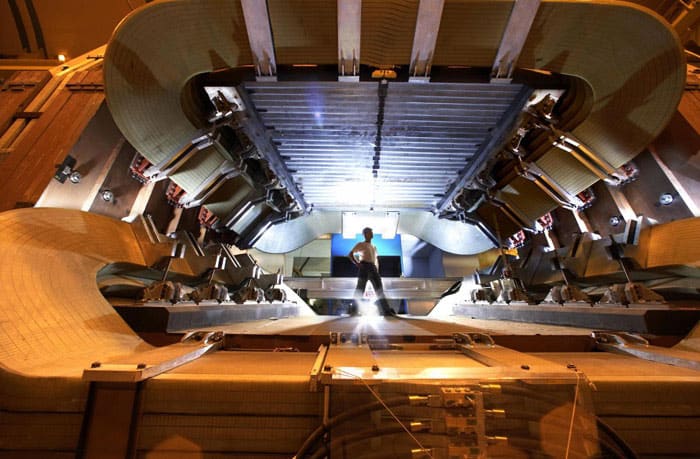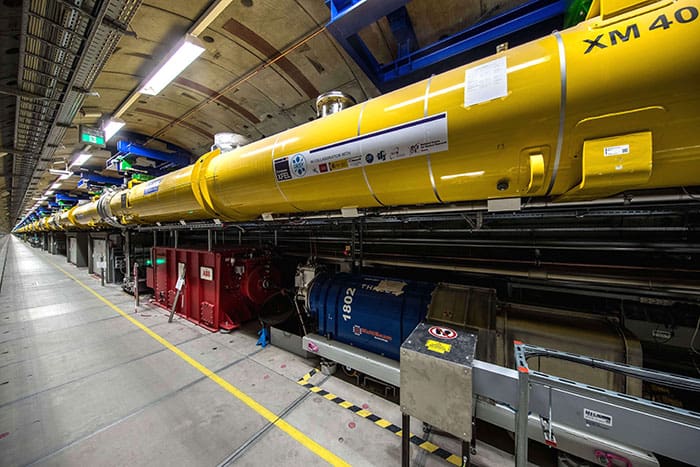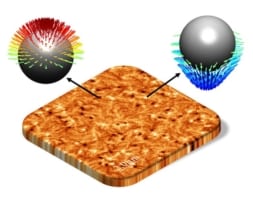Flash Physics is our daily pick of the latest need-to-know developments from the global physics community selected by Physics World‘s team of editors and reporters

Metallic “space fabric” is made by 3D printing
NASA scientists have developed a chainmail-like “space fabric” using 3D printing. Raul Polit-Casillas at NASA’s Jet Propulsion Laboratory (JPL) in the US and colleagues design advanced metallic woven textiles for applications in space, such as spacecraft shielding or astronaut suits. The latest prototype comprises small silver squares strung together, creating a flexible fabric reminiscent of chain mail. To create it, Polit-Casillas and team used additive manufacturing – more commonly known as 3D printing. The technique involves depositing layers of material to build up the desired object. Yet rather than just creating the fabric’s shape, the researchers were able to also incorporate function during printing. “We call it ‘4D printing’,” explains Polit-Casillas. “If 20th century manufacturing was driven by mass production, then this is the mass production of functions.” Consequently, the fabric is reflective on one side but absorbs light on the other, providing a means of passive heat management. It also remains strong despite being flexible and foldable. As well as using such fabrics in space, the researchers hope astronauts in the future will be able to manufacture a range of functional materials while in space. “Astronauts might be able to print materials as they’re needed – and even recycle old materials, breaking them down and reusing them,” says Polit-Casillas. “Conservation is critical when you’re trapped in space with just the resources you take with you.”
Has LHCb spotted a deviation from the Standard Model?

A possible deviation from the Standard Model of particle physics has been seen in a study of how B0 mesons decay in the LHCb experiment on the Large Hadron Collider (LHC) at CERN. LHCb physicists looked at how the B0 decays to a K* meson via two different processes – one involving the production of a muon and an antimuon, and the other the production of an electron and a positron. The Standard Model – specifically, the concept of lepton universality – predicts that both of these processes should occur with roughly equal frequencies. However, new analysis of data acquired by LHCb during the first run of the LHC in 2011–2012 suggests that muon/antimuon production is less likely to occur than electron/positron production – with a statistical confidence of 2.5σ. In 2014, LHCb physicists published a similar test of lepton universality in the decay of the B+ meson. They also found that muon/antimuon production is less likely to occur than electron/positron production – with a statistical confidence of 2.6σ. While these observations are far off the 5σ required for a “discovery” in particle physics, LHCb researchers hope that analysis of data taken in the second run of the LHC will push the result above the discovery threshold. The findings were presented yesterday at CERN by Simone Bifani of the University of Birmingham, and the slides and a video are available. “We have the potential to make the first observation of physics beyond the Standard Model at the LHC,” says Bifani. Tim Gershon of the University of Warwick adds: “The mood is one of cautious excitement – no one is popping any champagne corks yet.”
Accelerator milestone for European X-ray Free Electron Laser

Engineers working on the European X-ray Free Electron Laser (European XFEL) in Hamburg, Germany, have managed to send electrons down the facility’s 2.1 km-long superconducting linear accelerator. The commissioning of the superconducting linear accelerator, which is the world’s largest, is a major step towards the completion of the facility. Engineers will now spend the next month increasing the energy of the electron beam before passing them through “undulators” where they produce coherent X-ray beams. When fully complete later this year, the European XFEL will generate pulses of X-rays 27,000 times per second with each pulse lasting less than 100 fs (10–13 s), allowing researchers to create “movies” of processes such as chemical bonding and vibrational energy flow across materials.
- You can find all our daily Flash Physics posts in the website’s news section, as well as on Twitter and Facebook using #FlashPhysics. Tune in to physicsworld.com later today to read today’s extensive news story on a nearby exoplanet.



